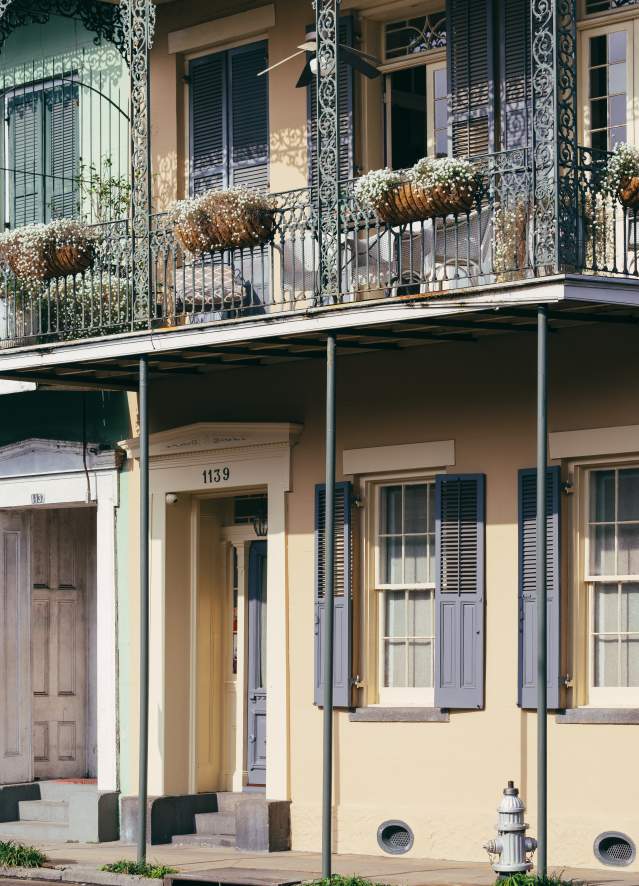Spanish Culture in New Orleans
Spanish influence in New Orleans starts with architecture and keeps going
Although New Orleans’ early European residents were French, the architecture of the French Quarter is actually Spanish. To pay a war debt, France gave up control of Louisiana to Spain from 1763 until 1803. Several fires destroyed the Vieux Carré’s original French architecture during Spain’s 40-year rule, so much of the city’s trademark charm can be credited to the Spanish rebuilding effort.

Architecture
The flat-tiled roofs, tropical colors, and ornate ironwork of the French Quarter are Iberian touches brought from across the Atlantic. In order to prevent fires, the Spanish-controlled government mandated that stucco replace wood for construction material and that all buildings be placed close together and near the street. Where there used to be yards and open spaces surrounding buildings, the French Quarter was now rendered both more intimate and more secretive, with continuous façades, arched passageways, and gorgeous rear gardens and courtyards hidden from street view.

Historic Sites
Construction on the Cabildo and the Presbytere, the matching buildings flanking St. Louis Cathedral in Jackson Square, occurred during the Spanish era. The Cabildo served as Spain’s administrative headquarters for Louisiana and it was here that the Louisiana Purchase was signed in 1803, deeding the territory to the United States from France. It later served as City Hall, then the state Supreme Court, before it became a museum in 1911. A stroll through the French Quarter will reveal many plaques indicating the old Spanish names for streets, often just variations on the current ones, and elsewhere in the city, street names honor historical figures from the Spanish era such as Galvez, Ulloa, Miro, and Gayoso.

Spanish Plaza, on the Mississippi River near the Outlet Collection at the Riverwalk, was a gift from Spain in 1976 celebrating the New Orleans-Spanish connection. The fountain at the center is surrounded by tile work with all the seals of the provinces of Spain,
For another reminder of the Spanish influence in New Orleans, there is an annual Running of the Bulls that swarms through the streets to pay homage and lampoon the world-famous Encierro at the San Fermin Festival in Pamplona, Spain. We of course shake things up a bit – like in Spain anyone can enter but our bulls are members of the Big Easy Rollergirls armed with toy baseball bats.

Cuisine
New Orleanians love fine European cuisine, so it’s not surprising the city boasts several delicious and successful Spanish restaurants with old and new culinary traditions. From tapas to paella, you can sample it all.
